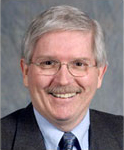Series to explore growth of Clark County through residents’ personal tales
adriana“How We Came to this Place,” a series of community conversations will explore how residents of Clark County, Wash., got there as individuals and as a community.
The Clark County Stories Project, beginning January 27, is a partnership of the Clark County Historical Museum, Washington State University Vancouver and Fort Vancouver Regional Library District. It aims to inspire and train community members to collect the oral histories of residents who have witnessed the changes of the last 30 to 50 years.
 “Each of us has a story about how we came here,” said WSU Vancouver history professor Sue Peabody, one of the project founders who also is a Clark County Historical Society trustee. “Each of us can see the rapid development and changes in our communities.”
“Each of us has a story about how we came here,” said WSU Vancouver history professor Sue Peabody, one of the project founders who also is a Clark County Historical Society trustee. “Each of us can see the rapid development and changes in our communities.”
The population of Clark County has more than doubled over the last 30 years to almost 500,000. More than half — 54 percent — of its residents were born in another state; 10 percent were born in another country.


 Ryan W. Booth, a Ph.D. student in history at Washington State University and member of the Upper Skagit tribe, gave his talk “They Are Always at the Front” Tuesday night at Wolff Auditorium, discussing the contributions of Native American soldiers during World War I.
Ryan W. Booth, a Ph.D. student in history at Washington State University and member of the Upper Skagit tribe, gave his talk “They Are Always at the Front” Tuesday night at Wolff Auditorium, discussing the contributions of Native American soldiers during World War I.